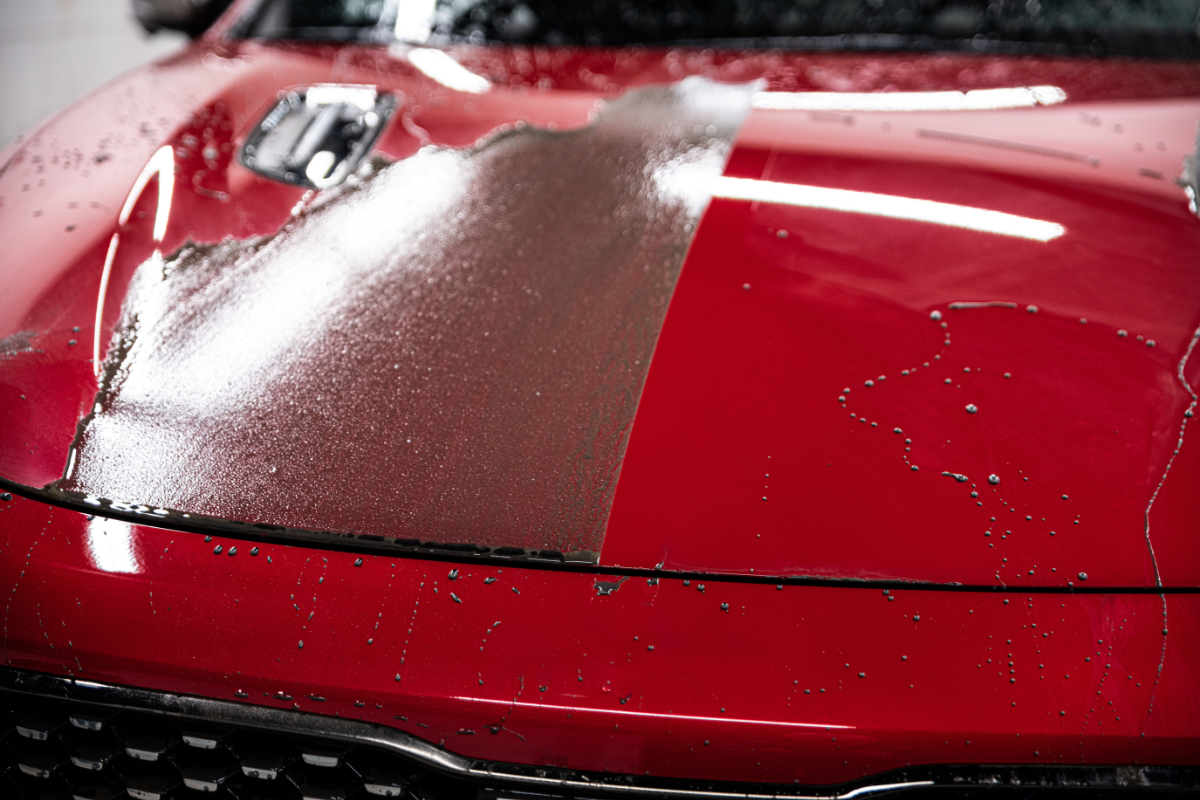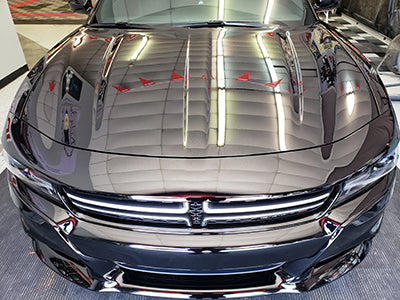Unveiling Ceramic Coating: The Essential Shield Your Automobile Deserves
In a period where preserving the visual and architectural honesty of lorries is critical, ceramic layer emerges as an engaging service, using a robust safety guard unlike any other. As we discover the transformative effect of ceramic finishing on automobile preservation, one should consider the nuanced benefits this development uses over typical techniques.
Understanding Ceramic Coating
In the globe of automobile enhancement, something that continually stimulates the interest of car enthusiasts and professionals alike is ceramic coating. At its core, ceramic finish is a fluid polymer put on the exterior of a lorry, creating a chemical bond with the automobile's manufacturing facility paint. This safety layer, mainly composed of silicon dioxide (SiO2), is engineered to provide a resilient shield against environmental contaminants.
The application process is thorough, requiring a dust-free and clean atmosphere to make certain optimum attachment and harmony. This layer types a semi-permanent bond with the vehicle's paint, which indicates it does not wash away or break down like conventional waxes or sealers, though it might need reapplication in time as a result of environmental wear.
Ceramic finishings use a high level of solidity which adds to its resilience, making it a favored choice for those seeking long-term security for their lorries. The layer is clear, improving the all-natural gloss and deepness of the paint, thus preserving the lorry's visual allure. It is critical, nonetheless, to recognize that while ceramic finishes give a durable surface area layer, they are not invulnerable to all physical damages, such as deep scratches or dents.
Advantages of Ceramic Layer
Durability is a trademark of ceramic finishing, offering vehicle proprietors a concrete advantage by considerably enhancing the long life of their car's outside. This sophisticated protective layer creates a robust guard against ecological hazards such as UV rays, oxidation, and chemical impurities. By creating a semi-permanent bond on the automobile's surface area, ceramic layers withstand the rigors of day-to-day exposure to the elements, thus preserving the paintwork's stability and vibrancy for a prolonged duration.
Furthermore, the hydrophobic nature of ceramic coverings is another significant benefit, as it effectively drives away water and stops the buildup of dust and crud. This residential or commercial property not only maintains the vehicle cleaner for longer durations but additionally simplifies the maintenance routine, lowering the regularity and initiative needed for cleaning. The slick surface of the coating reduces rubbing, making certain that contaminants slide off easily without abiding by the paint.
On top of that, ceramic coatings boost the aesthetic charm of lorries by enhancing the gloss and depth of the paint. This creates an aesthetically striking surface that can match the look of a fresh waxed lorry, without the requirement for constant reapplication. In general, ceramic coverings use a mix of security, convenience of maintenance, and improved aesthetics, making them an important financial investment for automobile proprietors.
Application Procedure Discussed
Understanding the procedure of applying ceramic covering is crucial for attaining the aesthetic and protective benefits formerly discussed. The application procedure, while uncomplicated, requires careful focus to detail to guarantee optimal results. Initially, the automobile has to undergo a thorough cleaning procedure try this website to eliminate dust, crud, and any kind of existing wax or sealants. This step is essential as it makes certain the finish can effectively bond to the automobile's surface.
Following, the surface area is clayed to remove any type of installed pollutants that cleaning might not remove. Following this, a paint adjustment process may be required to deal with any scratches or imperfections, as ceramic coating can enhance existing flaws rather than conceal them. As soon as the surface area is pristine and prepared, the ceramic finishing is applied in small, convenient sections using an applicator pad.

Comparing to Conventional Wax
When analyzing ceramic look at here coverings and typical wax, one must consider the distinct benefits each offers for vehicle defense. Typical wax has actually long been treasured for its capability to improve a car's sparkle and supply an essential layer of protection versus aspects like UV rays and minor scratches.
Nevertheless, ceramic layers offer an extra innovative kind of defense. Made up of nano-ceramic bits, these coatings develop a semi-permanent bond with the vehicle's paintwork, web developing a difficult, hydrophobic layer. This results in exceptional resistance to ecological contaminants, such as bird droppings, tree sap, and road grime, which can substantially break down an automobile's surface in time (ceramic coating). Unlike wax, which generally needs reapplication every few months, ceramic finishings can last a number of years with correct treatment, providing long-term security and lowering upkeep initiatives.
Essentially, while traditional waxes supply a cost-efficient means to accomplish short-term gloss and defense, ceramic finishings provide an even more sturdy, resistant guard, making sure an automobile's visual and architectural integrity over time.
Preserving Your Ceramic Layer
Preserving a ceramic finish needs a mindful approach to guarantee its durability and efficiency. Unlike typical wax, a ceramic layer offers a durable layer of protection, however it requires ideal care to protect its stability.

It is very important to prevent automated car laundries, as they usually utilize extreme chemicals and unpleasant brushes that can weaken the coating. Instead, hand washing is suggested to guarantee detailed and gentle cleaning. Vehicle parking in shaded or covered areas can aid protect the coating from extended UV exposure, protecting the vehicle's look. By abiding by these maintenance techniques, the ceramic coating can efficiently supply durable defense and aesthetic appeal - ceramic coating.
Conclusion
Ceramic finishing stands for a significant advancement in vehicle treatment, providing a robust safety layer that chemically bonds with vehicle paint. The semi-permanent nature of ceramic covering makes certain durable gloss and ease of maintenance, raising both the look and toughness of lorries.
At its core, ceramic covering is a fluid polymer used to the exterior of a lorry, developing a chemical bond with the vehicle's manufacturing facility paint.Ceramic coatings supply a high level of firmness which contributes to its longevity, making it a preferred option for those looking for long-lasting defense for their vehicles.Longevity is a trademark of ceramic covering, using car owners a concrete benefit by dramatically enhancing the durability of their vehicle's exterior. In general, ceramic finishes use a blend of protection, convenience of maintenance, and superior visual appeals, making them a vital investment for car owners.
When taking a look at ceramic layers and traditional wax, one should think about the distinct benefits each deals for car protection.